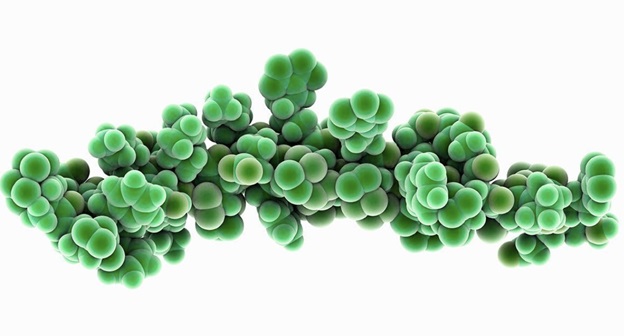
Antimicrobial Peptides are a class of small peptides that are found throughout nature. They play a key role in the innate immunity system. Over 2,600 antimicrobial proteins have been identified to date. These proteins are found in a wide variety of species including bacteria, viruses and fungi.
Antimicrobial Peptides
- Microorganisms-Derived Antimicrobial Peptides
Microorganisms-derived antimicrobial peptides are classified into two types: antimicrobial peptides derived from bacterial and antimicrobial peptides derived from viral. Bacteriocins are antibacterial peptides derived from bacteria. Bacteriocins are a peptide type or precursor to molecules with bactericidal properties. Bacteria produce them through protein metabolism. These peptides consist of cationic amino acid chains which are either hydrophobic or amphiphilic. We can classify bacteriocins based on their biochemical properties into three different groups: class I (classes I and II), class III (classes III) and class IV. Type I bacteriocins are also known as thioether antibiotics. They are less than 5ku in molecular mass and range from amino acids 19 to 38. They have good mucosal properties and are heat resistant. These amino acids are rare, thioether structures. They include Lanthionine and b-methyllanthione. Class II bacteriocins (also known as lactic acids bacteriocins) are antibacterial peptides discovered recently. Their chemical, biological and physico-chemical properties can be used for food preservation. Class II bacteriocins have a slightly lower molecular mass (4-6 ku) than class I. Secreted are class III bacteriocins. They are produced by proprotein translocases in bacteria and have a molecular mass greater than 30 ku. A very rare type of antibacterial protein is derived by viruses. These lentiviral cytolytic peptides are encoded by the C-terminal sequences in HIV-1 transmembrane protein. These peptides are toxic to cells and microorganisms. LLPs are high in arginine, but low in Lysine. In most cases, microorganisms-derived antimicrobial peptides exist in a cyclic structure.
- Plant-Derived Antimicrobial Peptides
Antibacterial propeptides derived from plants are effective against bacterial pathogens and plant pathogens. They are important antibiotic peptides that act as a barrier for plant defense systems. Thionins and defensins are the most common antibacterial plant proteins. Lipid transfer protein, cells penetrating peptides, and ecdysone are all examples. These peptides have similar properties including a disulfide and positive charge. All of the target sites are found within the cell membrane.
- Insect-Derived Antimicrobial Peptides
Insects are common in nature, with over 1,000,000 different species. They have evolved defense mechanisms and are highly adaptable. Antimicrobial peptides are produced in the hemolymph of insects exposed to environmental conditions. The immune system of insects is a vital part. Antibacterial peptides are secreted by the fat body of insects to inhibit pathogens. About 200 different antibacterial proteins have been isolated in insects. These peptides are divided into five categories based on the antibacterial mechanism and amino acid sequence.
- Amphibian-Derived Antimicrobial Peptides
Amphibians are characterized by their exposed skin, high levels of humidity and respiratory function. Amphibians can only survive in humid conditions because of their morphological and physiological characteristics. This makes them an ideal habitat for pathogenic bacteria. Amphibians have evolved a system of defense to fight pathogenic bacteria in order to adapt and exploit diverse environments. Antibacterial peptides are crucial to amphibians’ immune systems when they are under stress, trauma or adrenaline. Over the long term of evolution, the antimicrobial gene has undergone multiple mutations and duplications. The result is a wide range of antimicrobial protein structures. Amphibian secretions have approximately 1,400 antimicrobial proteins. Secretions are different for molecules that have antimicrobial bioactive properties. The structural characteristics of amphibian antimicrobial proteins allow them to be classified into two distinct groups: cyclic antimicrobial peptides containing intramolecular disulfide bonds and linear antimicrobial peptides in an a-helical arrangement.
- Mammalian Antimicrobial Peptides
Antimicrobial peptides are not harmful to mammals, but they can be lethal for exogenous bacteria. Mammalian proteins that are antimicrobial are found in the mucosal cells, neutrophils and skin. These include antimicrobial surfactant propeptides found in the respiratory tract, as well as epithelial tissues defensins. These antimicrobial peptides form the body’s first line of defense. Defensins and cathelicidins are the main antimicrobial protein categories in mammals. Defensins are the largest and most studied class of antimicrobial protein. Mammalian defensins are divided into a and b groups.
- Marine Antimicrobial Peptides
Oceans are the origin of life and provide a large habitat for animals. About half of the world’s creatures live in the ocean. This vast biobank contains a wealth of active antibacterial substances. Many studies have shown that marine organisms produce antibacterial peptides. These antibacterial substances have been discovered in marine animals. Among marine vertebrates, fish are the most likely to produce antimicrobial protein. Antimicrobial proteins tend to be secreted in the mucus layer of marine fish due to their body structure. This is the first barrier that prevents the nonspecific immune systems from killing bacteria pathogens before they enter an organism. Fast synthesis, rapid dissemination, and flexibility are the characteristics of marine bio antimicrobial protein. These proteins have a unique function, which is different from any other immune system. Molluscs, crustaceans and other invertebrate marine animals are included. The cellular and humoral immune systems are the main defense mechanisms for these animals. Antimicrobial peptides are an important part of the innate immune defense system. It can respond quickly to pathogenic bacteria in real time.
This article was written by a peptide professional from Domestic Peptides. Looking for High-Quality Peptides and Research Chemicals for sale? Well, look no further. Welcome to Domestic Peptides where you’ll find a huge selection of Research Peptides for sale and Research Chemicals for Sale, all made in the USA. Click Here to learn more.



